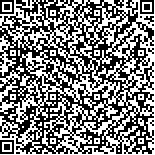李建华,王士源,阮韦淑怡,等.基于沉浸式虚拟现实的核心稳定辅助训练对缺血性脑卒中患者平衡功能的影响[J].中华物理医学与康复杂志,2025,47(7):601-607
扫码阅读全文

|
| 基于沉浸式虚拟现实的核心稳定辅助训练对缺血性脑卒中患者平衡功能的影响 |
|
| |
| DOI:10.3760/cma.j.cn421666-20250306-00205 |
| 中文关键词: 缺血性脑卒中 平衡功能障碍 站姿稳定性 虚拟现实 康复训练 |
| 英文关键词: Ischemic stroke Balance dysfunction Postural stability Virtual reality |
| 基金项目:国家自然科学基金(62373326) |
|
| 摘要点击次数: 3028 |
| 全文下载次数: 1902 |
| 中文摘要: |
| 目的 探讨基于沉浸式虚拟现实(VR)的核心稳定辅助训练对缺血性脑卒中患者平衡功能的影响。 方法 选取缺血性脑卒中后偏瘫患者72例,按照随机数字表法将其分为对照组和观察组,每组36例。治疗过程中,对照组脱失4例,观察组脱失2例,最终对照组与观察组分别纳入32例、34例。2组患者均给予内科常规治疗,在此基础上,对照组采用常规康复训练,观察组采用基于沉浸式VR的核心稳定辅助训练。治疗前及治疗4周后(治疗后),采用Fugl-Meyer平衡功能量表评定2组患者的平衡功能,利用三维测力台采集患者在睁眼/闭眼状态下,双侧足底COP在左右和前后方向上的摆动幅度、晃动速度、外周面积、总轨迹长度。 结果 治疗后,2组患者的Fugl-Meyer平衡功能量表评分均较组内治疗前增加(P<0.05)。2组患者治疗后的COP摆动幅度、晃动速度、外周面积、总轨迹长度比较:①睁眼状态下,对照组治疗后偏瘫侧COP在前后方向上的摆动幅度降低,观察组治疗后偏瘫侧与健侧COP在左右、前后方向上的摆动幅度均降低(P<0.05);2组患者治疗后偏瘫侧COP在前后方向上的晃动速度、健侧COP在左右和前后方向上的晃动速度均降低(P<0.05);对照组治疗后健侧COP的外周面积减小、总轨迹长度减短(P<0.05),观察组治疗后偏瘫侧与健侧COP的外周面积均减小、总轨迹长度均减短(P<0.05);与对照组治疗后同指标比较,观察组偏瘫侧COP的外周面积[(90.01±46.69)mm2]明显较小(P<0.05)。②闭眼状态下,观察组治疗后偏瘫侧COP在前后方向上的摆动幅度[(64.64±35.06)cm]、健侧COP在左右[(14.24±6.77)cm]和前后[(44.58±24.46)cm]方向上的摆动幅度均降低(P<0.05);对照组治疗后健侧COP在前后方向上的晃动速度降低(P<0.05),观察组治疗后偏瘫侧COP在前后方向上的晃动速度[(16.70±8.60)mm/s]、健侧COP在左右[(4.29±1.79)mm/s]和前后[(8.77±2.21)mm/s]方向上的晃动速度均降低(P<0.05);对照组治疗后偏瘫侧COP的外周面积减小、总轨迹长度减短(P<0.05),观察组治疗后偏瘫侧COP的外周面积[(143.89±82.25)mm2]减小,健侧COP的外周面积[(102.21±47.68)mm2]减小、总轨迹长度[(1819.58±592.94)mm]减短(P<0.05)。 结论 基于沉浸式VR的核心稳定辅助训练可以有效改善缺血性脑卒中患者的平衡功能,值得临床应用。 |
| 英文摘要: |
| Objective To explore the effectiveness of immersive virtual reality (VR)-guided core stability-assisted training in improving the balance of ischemic stroke survivors. Methods Sixty-six hemiplegic ischemic stroke survivors were randomly divided into a conventional rehabilitation training group (CON) of 32 and an immersive VR-guided core stability-assisted training group (VR-TOT) of 34. In addition to basic internal medical treatment, the CON group underwent conventional rehabilitation therapy, while the VR-TOT group received VR-guided core stability-assisted training. Before and after 4 weeks of the treatments, the subjects′ balance was evaluated using the Fugl-Meyer balance scale. A three-dimensional force platform was used to collect the sway amplitude, sway speed, peripheral area and total trajectory length of the center of pressure COP of the bilateral plantar in the left-right and anterior-posterior directions while the subjects stood with the eyes open and closed. Results After the treatments, the average Fugl-Meyer balance scores of both groups had improved significantly. In the eyes-open condition, after the treatment, there was a significant decrease in the average COP sway amplitude in the anteroposterior direction on the hemiplegic side among the CON group, as well as in both the mediolateral and anteroposterior directions on both sides in the VR-TOT group. The sway velocity in the anteroposterior direction on the hemiplegic side had decreased significantly in both groups, and the sway velocity in both the mediolateral and anteroposterior directions on the non-hemiplegic side had also decreased significantly. In the CON group the peripheral area on the non-hemiplegic side had decreased and the total trajectory length had shortened significantly. In the VR-TOT group there were significant decreases in the peripheral area on both sides and in the total trajectory length on both sides. Comparing the two groups after treatment, the peripheral area on the hemiplegic side in the VR-TOT group was significantly smaller. In the eyes-closed condition, the sway amplitude of the COP on the hemiplegic side in the anteroposterior direction and on the non-hemiplegic side in both the mediolateral and anteroposterior directions had decreased significantly in the VR-TOT group after the treatment. The average sway velocity had decreased significantly in the anteroposterior direction on the non-hemiplegic side in the CON group. In the VR-TOT group this was observed in the anteroposterior direction on the hemiplegic side and in both the mediolateral and anteroposterior directions on the healthy side. In the CON group the average peripheral area of the COP on the hemiplegic side had decreased, and the total trajectory length had shortened, both significantly. In the VR-TOT group, the peripheral area on the non-hemiplegic side had decreased significantly as well. Conclusions Core stability-assisted training based on immersive virtual reality can effectively improve the balance of ischemic stroke survivors. It shows promise for clinical application. |
|
查看全文
查看/发表评论 下载PDF阅读器 |
| 关闭 |
|
|
|